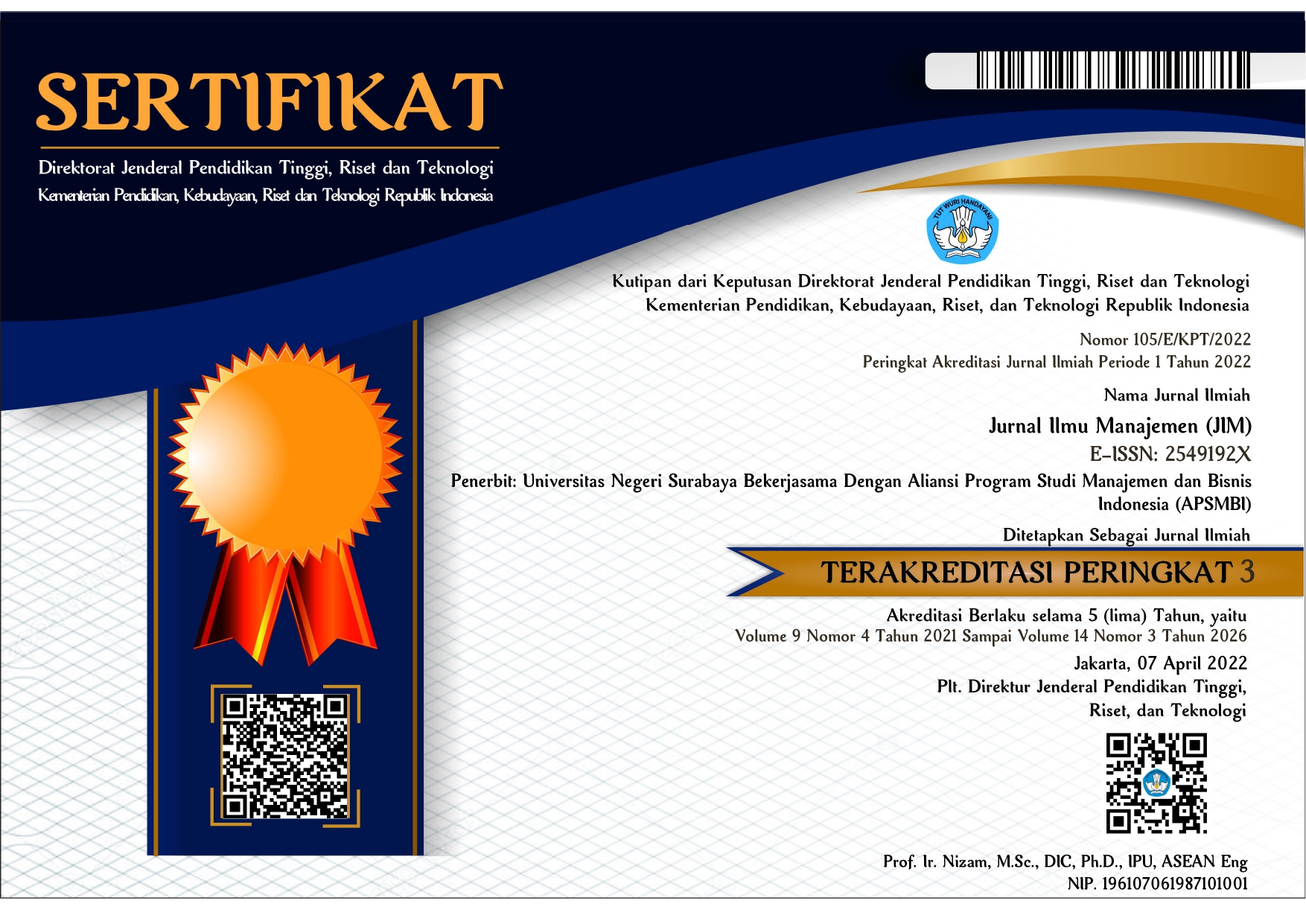Pengaruh financial distress, leverage, dan free cash flow terhadap manajemen laba perusahaan sektor transportasi & logistik di Bursa Efek Indonesia
DOI:
https://doi.org/10.26740/jim.v11n2.p278-292Keywords:
accrual earnings management, financial distress, free cash flow, leverage, real earnings managementAbstract
Earnings management is a manager's fraudulent behaviour to deceive stakeholders by changing the numbers in the financial statements. This study aims to determine the effect of financial distress, leverage and free cash flow on earnings management, both real and accrual earnings management. The research sample consisted of 21 companies from the transportation and logistics sector listed on the Indonesia Stock Exchange (IDX) for 2019-2021. Data analysis used panel data analysis with STATA 14.2. The study results show that simultaneously the independent variables affect Real Earnings Management and accruals. However, partially, financial distress (FD) and free cash flow (FCF) do not affect real earnings management (REM). The FD and FCF variables are not a factor causing managers to do REM or not to do REM, companies that experience financial distress or show low FCF numbers tend to focus on improving company performance. Leverage (LEV) has a positive effect on real earnings management. Companies with high LEV values show more outstanding debt than assets, so managers do REM to cover the company's debt figures. Financial distress and leverage do not affect accrual earnings management (AEM). Companies that experience financial distress or show high leverage make managers focus on overcoming these problems so that these two factors are not the main factors for managers to carry out AEM. Free cash flow harms accrual earnings management.
References
Ikhsan, A., & Ishak, M. (2005). Akuntansi Keperilakuan. Jakarta: Salemba Empat.
Indah, D. (2022). Pelanggaran Etika Profesi dalam Skandal Manipulasi Laporan Keuangan PT Garuda Indonesia. https://www.kompasiana.com/search_artikel?q=manipulasi+pt+garuda+indonesia
Sandria, F. (2021). Deretan Skandal Lapkeu di Pasar Saham RI, Indofarma-Hanson! https://www.cnbcindonesia.com/market/20210726191301-17-263827/deretan-skandal-lapkeu-di-pasar-saham-ri-indofarma-hanson/2
Downloads
Published
How to Cite
Issue
Section
License

This work is licensed under a Creative Commons Attribution-NonCommercial 4.0 International License.
 Abstract views: 2336
,
Abstract views: 2336
, PDF Downloads: 2007
PDF Downloads: 2007










